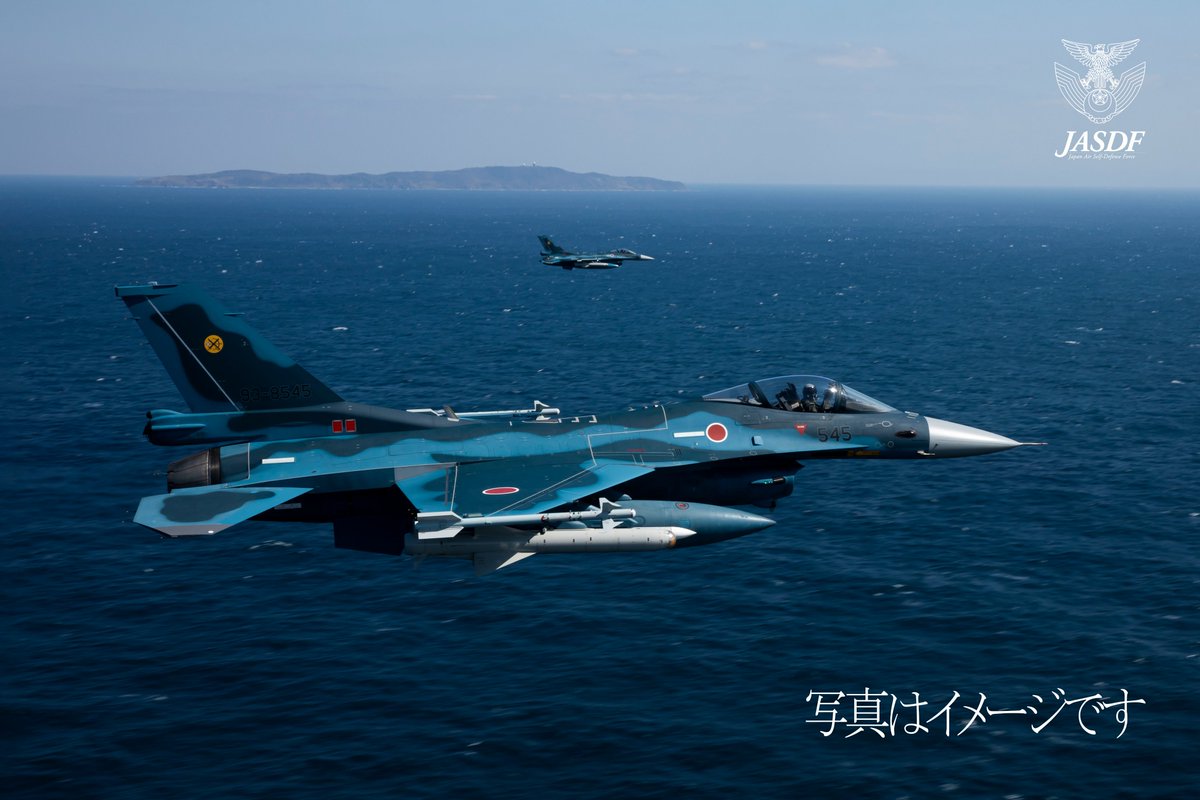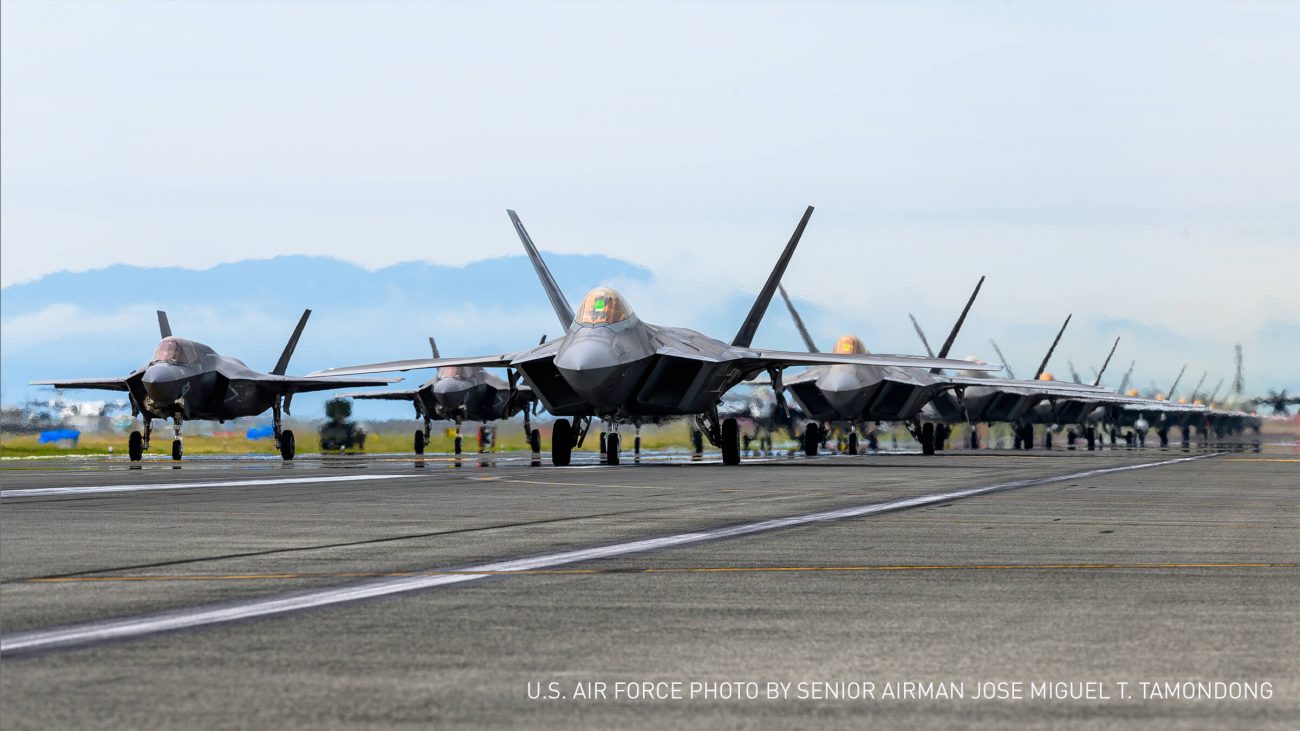In response to the increasing Chinese and Russian presence in the region, the US recently made a stunning display of force by conducting a joint exercise with the Japanese Air Force that involved more than 50 warplanes.
The exercises featured a dozen of the US Air Force’s high-end F-22 Raptors, four F-35 stealth jets, and 13 heavyweight F-15 jets. Along with the US fighter jets, 20 Japanese F-15 and F-2 fighters and three US reconnaissance and support aircraft.
The warplanes flew over the Sea of Japan, the Pacific Ocean, and the East China Sea to strengthen their tactical abilities and “joint response capability,” said the Japanese Defense Ministry on July 14. The latest drills were held on July 6 and July 11, and 12.
The exercises were conducted as Chinese and Russian warships have been frequently seen off Japan’s coast, particularly since Russia began its invasion of Ukraine in late February.
The US Air Force did not make any statement about this latest exercise. However, the service announced in a news release last month that it had sent 12 F-22s from the Hawaii Air National Guard to Kadena Air Base in Okinawa.
According to a US statement, the F-22s were in Japan to carry out “various missions to enhance operational readiness to defend Japan and ensure a free and open Indo-Pacific.”
Additionally, the US and Japanese maritime patrol aircraft recently exercised close to the Nansei Islands, the nearest Japanese territory to Taiwan, and the Senkaku Islands, a group of uninhabited islands that China also claims.

In recent weeks, Russian and Chinese warships have been cruising closer to Japan. This year, the Chinese Coast Guard and naval vessels have been in the waters near the Senkaku Islands for a record time.
Meanwhile, early in July, a Chinese naval ship chased a Russian warship outside Japanese territorial waters near the Senkaku Islands in the East China Sea. According to Japan, China did this to assert its sovereignty over the islands that Tokyo controls.
In late May, when Tokyo was hosting a Quad summit with participation from Australia, India, and the United States, Beijing and Moscow also conducted an exercise involving six strategic bombers over the Pacific, the East China Sea, and the Sea of Japan.
US Corners ‘Belligerent Beijing’ On Tibet Issue; Introduces New Legislation To Settle China-Tibet Conflict
Deployment Of High-End Weapons
The latest action coincides with the US Air Force’s relocation of some of its most crucial resources to the Indo-Pacific. As earlier reported by the EurAsian Times, the US sent its two B-2 stealth bombers to the Royal Australian Air Force Base Amberley.
These bombers will “conduct training and strategic deterrence missions with allies, partners, and join forces in support of a free and open Indo-Pacific.”
HIMARS Havoc! After US MLRS, Now Bigger, Better, British M270 Rockets Could Join The War Against Russia
In the wake of Russia’s invasion of Ukraine, under Prime Minister Fumio Kishida, the Japanese administration has also vowed to play a more active part in preserving regional security. Tokyo perceives a security threat from the growing relationship between China and Russia.
Beijing and Moscow are disputing Japan’s territorial claims to the Senkaku or Diaoyu Islands in the East China Sea and the Kuril Islands or Northern Territories that separate the Sea of Okhotsk from the Northern Pacific, respectively.

Due to China’s and Russia’s recent expansionist posture in the region, the US is also growing its cooperation with Japan. In a related development, patrol planes from Japan’s Maritime Self-Defense Force and the United States Navy conducted a joint exercise over waters near Japan’s southwestern islands on July 13.
Meanwhile, Admiral John C Aquilino, head of the US Indo-Pacific Command, previously said he wants the US Air Force to base its fifth-generation fighter jets west of the International Dateline, i.e., closer to China.
Recently, the US deployed its six advanced F-35 stealth fighter jets to South Korea. The F-35 stealth fighters from both countries then joined forces for four days of joint aerial exercises as the allies worked to improve their interoperability and joint defense posture against North Korea’s growing threats.

The exercise occurred between July 11 and July 14 and was announced by South Korea’s Air Force on July 14. Since delivering 40 F-35A stealth fighter aircraft to South Korea in January, this is the first time that F-35A stealth fighter aircraft from the two nations have engaged in joint training exercises.
The South Korean and US air forces conducted critical combined air operations and missions during the air combat training, such as airborne alert interdiction and defensive counter-air, while assuming the roles of a friendly force and an enemy.
Furthermore, on July 13, the US Navy conducted a patrol in the South China Sea near Chinese-controlled islands to assert freedom of navigation through the vital shipping lane.
In response, the Southern Theater Command of China kept track of the vessel’s movements and ordered it to leave the area.
- Contact the author at ashishmichel@gmail.com
- Follow EurAsian Times on Google News





